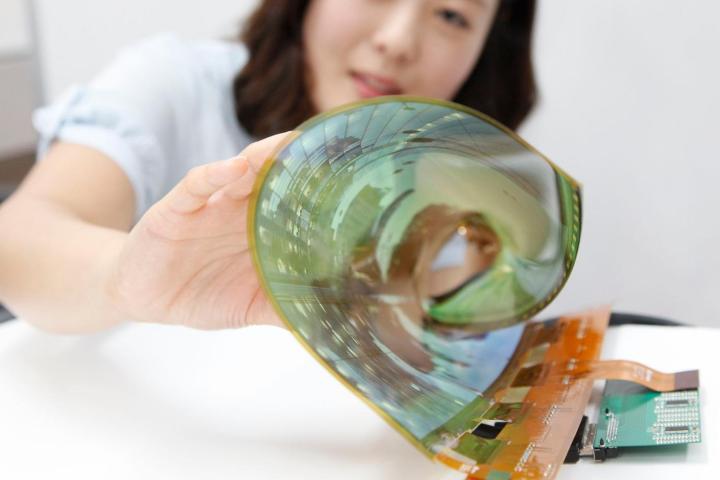
According to Business Korea, two research teams from KAIST and Kolon Glotech have put their heads together and created an OLED technology that allows the displays to work on a textile substrate. The result is a screen that is much more flexible than competing technologies.
Flexible, foldable, and wearable displays have been developed with OLED before. Because OLEDs are self-illuminating displays, they can be formed into thin, flexible screens based on the plastic boards used in producing them. This material is a limiting factor, but so are the displays themselves. OLEDs are not known for their durability and are easily torn.
Simply putting displays on a piece of fabric is difficult. Typical fabrics are too rough and expand based on temperature. The technology is still too fragile. The researchers’ solution was to create something new. They put together a fabric that resembles a glass panel, yet retains the flexible nature of fabrics. The OLEDs were then fixed to this glass-like material.
KAIST and Kolon Glotech have high hopes for the future of fabric-based displays. “Textile OLEDs which are more flexible than plastic and have high device reliability are expected to contribute to the development of comfortable wearable displays,” said KAIST professor Choi Kyung-chul.
The fabric OLEDs that were developed had a lifespan greater than 1,000 hours. If they remained idle, they could last more than 3,500 hours. This doesn’t compare favorably to the displays we are used to, but it is a huge step in creating wearable displays. Hopefully, additional research will further refine the tech until we can truly wear displays woven into our clothes.
Editors' Recommendations
- Glowing OLED tattoos could be used for fashion, health care, and more
- iExpand? Apple patents multiple bizarre, expandable smart ring designs


